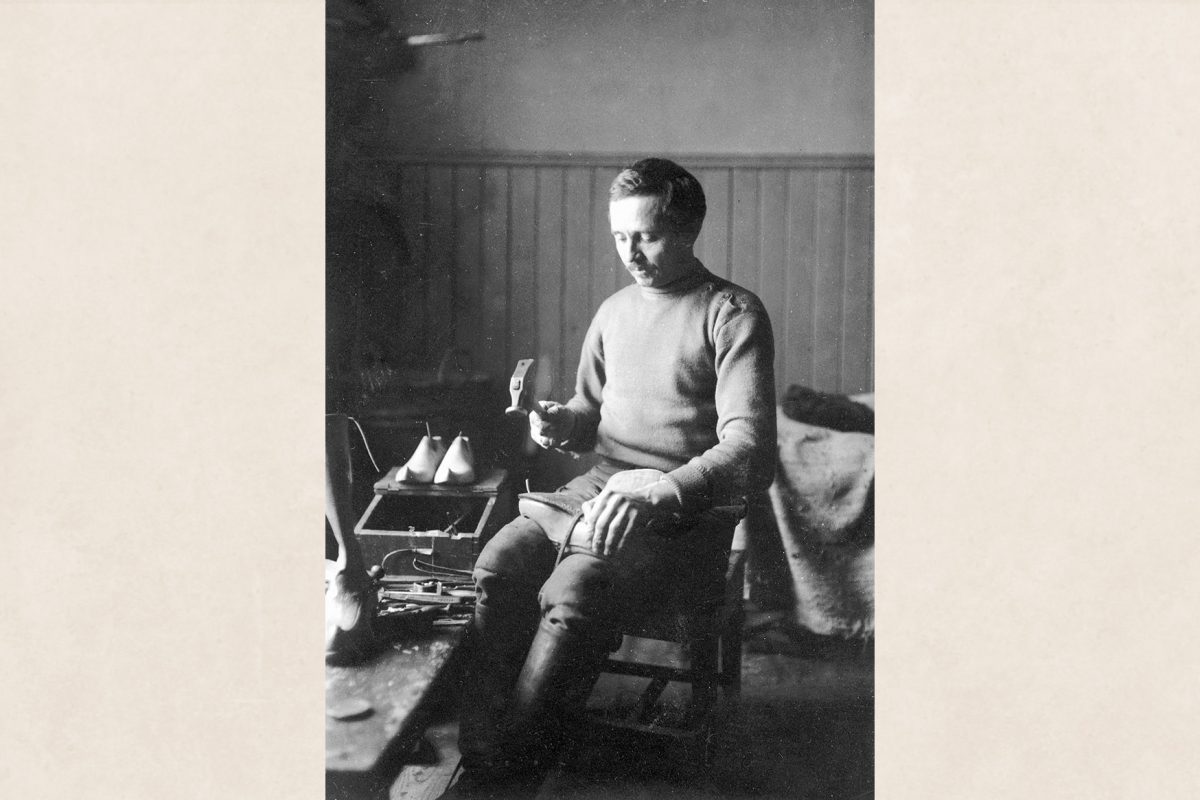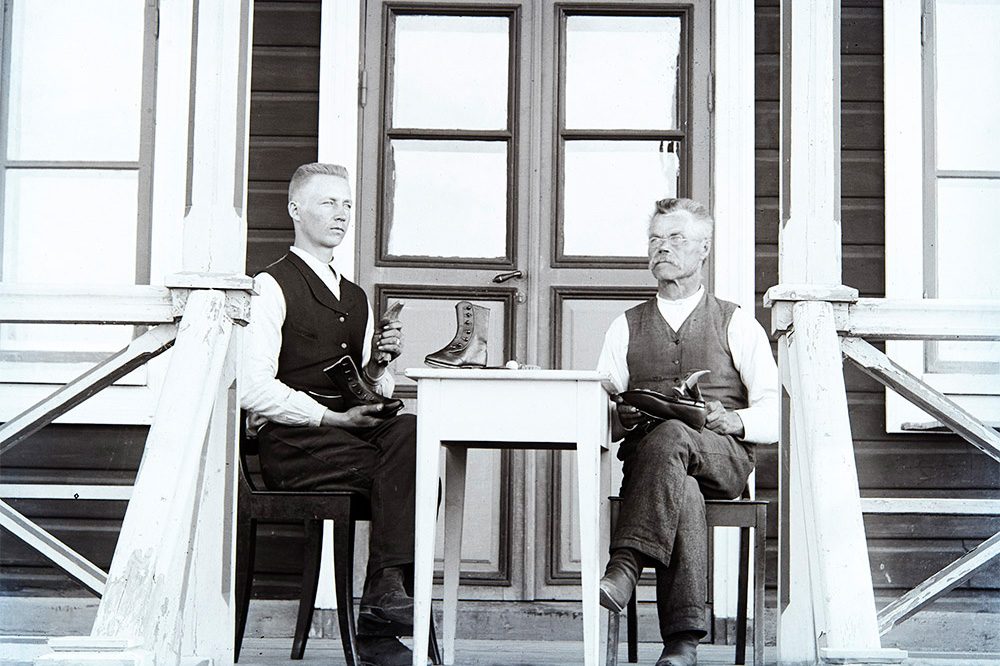Shoemaker’s profession
This is probably a German factory-made children’s button boot used as a model in a shop. Button boots were more common among the affluent members of society. The buttons were pulled onto the hook through the hole. The lining of the boot is made of blue-white striped cotton linen. The short-shafted boot has four small wooden buttons on the outer side to secure the shaft.
Read more about becoming a shoemaker and the history of shoemakers in Finland. What about a cobbler?
”A big-headed person wouldn’t make a good shoemaker as he couldn’t bear to keep his neck down.”
A shoemaker is a traditional handicraft professional who designs, manufactures and repairs footwear. Until the 18th century, professional shoemakers existed only in cities. Back in the early 20th century, the difference in access to shoemaking services was large between rural and urban. In many households, footwear was made by themselves. Shoemaker’s work was traditionally a man’s job. Shoe lessons were passed from father to son or through apprenticeship. The self-employed or shoemakers, trained their apprentices and journeymen. The work of shoemakers was determined and supervised by the trade union until 1868, when trades were freed.
The factory production of shoes began in Finland in the late 19th century. A trade union was formed in 1917 as concerns about the skills of shoemakers grew. Some of the shoemakers were informal, self-taught cobblers. In the 1920s, the mechanization of the shoemaker’s profession began, and shoemakers travelling around towns gradually moved to workshops. As a result of the development of the shoe industry, the manufacture of shoes by shoemakers decreased and the profession of shoemakers began to focus more on repair. The shoemakers’ rounds in the countryside and making shoes at home continued throughout the 1950s.
The footwear industry faced challenges in Finland in the 1990s and mass-produced footwear production has continued to decline by the 2010s. Even more than 10 million pairs of shoes were made in Finland in the 1980s, and now only about 1.5 million pairs are made. You can study as a shoemaker in Kankaanpää or Hämeenlinna as well as with an apprenticeship contract. In 2019 there are still 270 shoemakers in Finland.
For more information on handcrafted shoe construction, read about Intangible Cultural Heritage on Wiki:
https://wiki.aineetonkulttuuriperinto.fi/wiki/Keng%C3%A4n_k%C3%A4sity%C3%B6m%C3%A4inen_valmistus
Shomakers at work:
From Cobbler to Factory Hall (1947)
Video From Cobbler to Factory Hall (duration 7:40). The video, completed in 1947, describes a change in working patterns and working conditions in the footwear industry, industrial footwear manufacturing, and the organisational activities of leather and rubber workers.
Videography by Reino Tenkanen, Commentary by A. Moisander.















